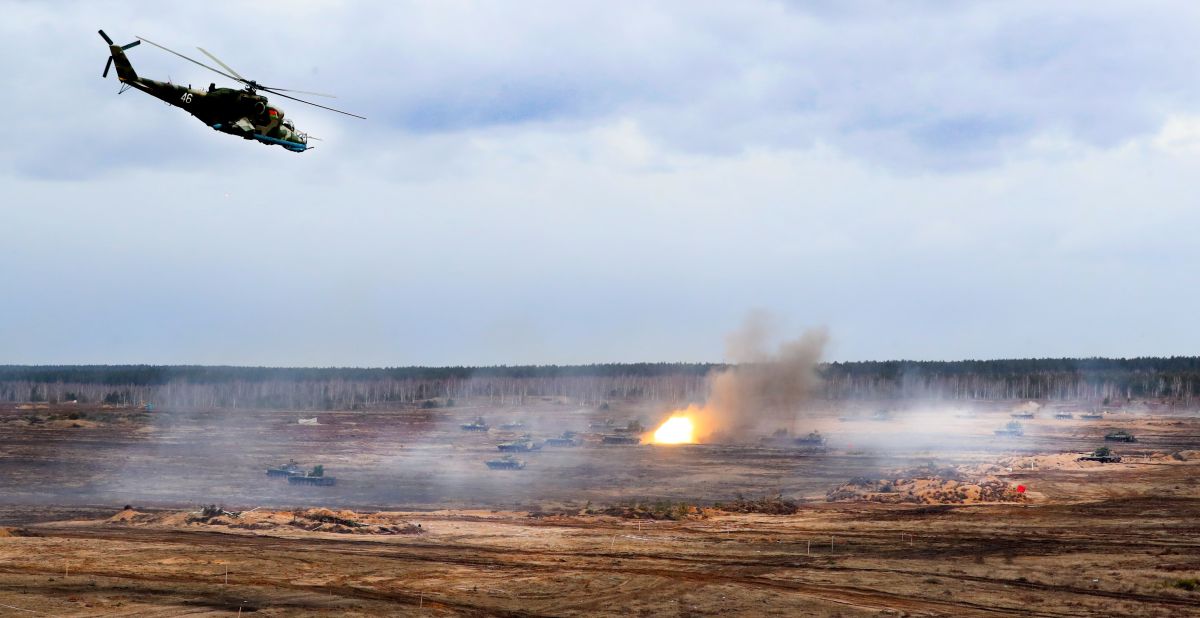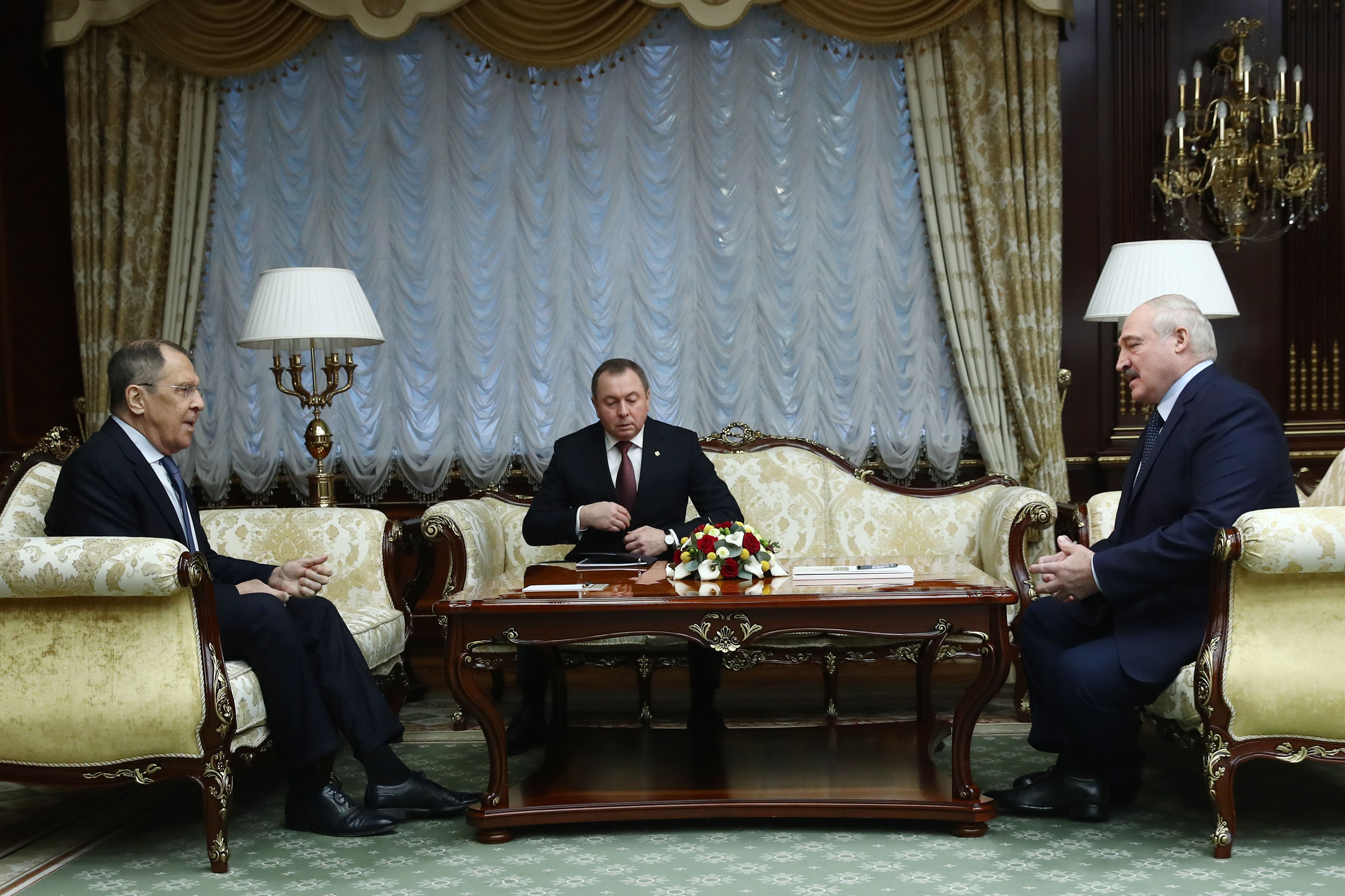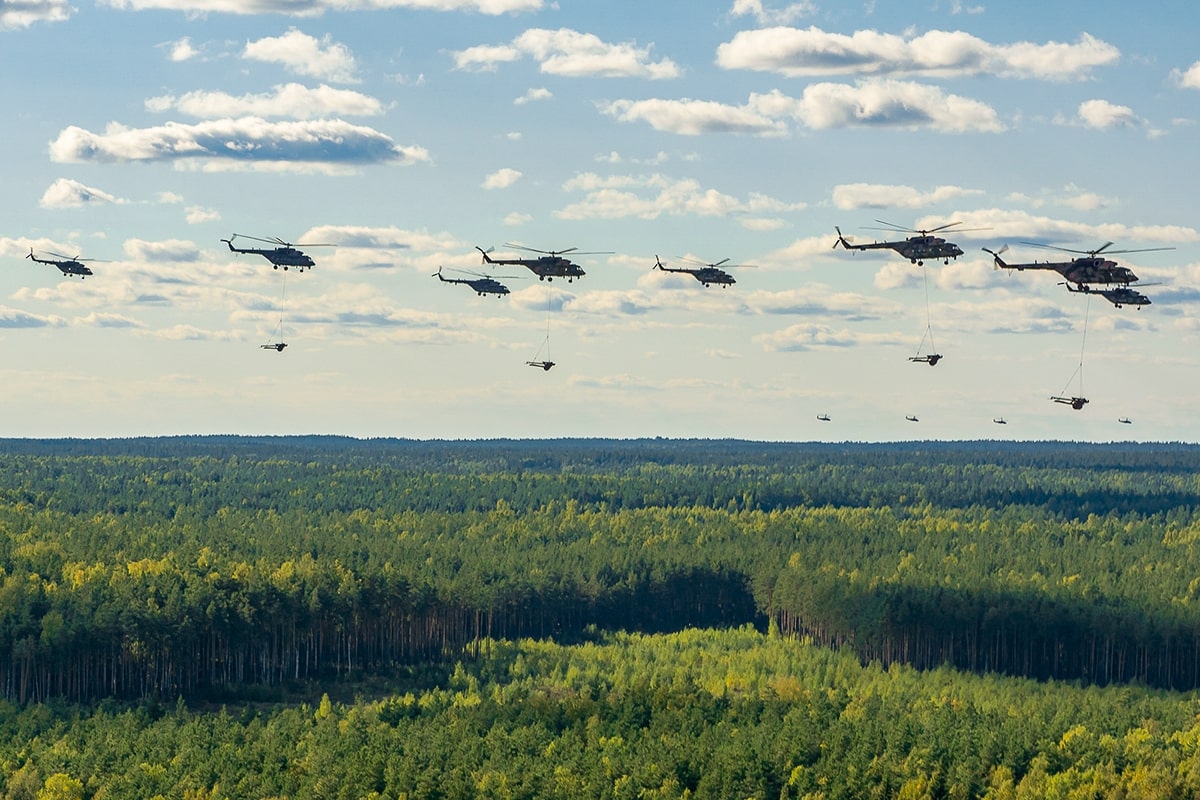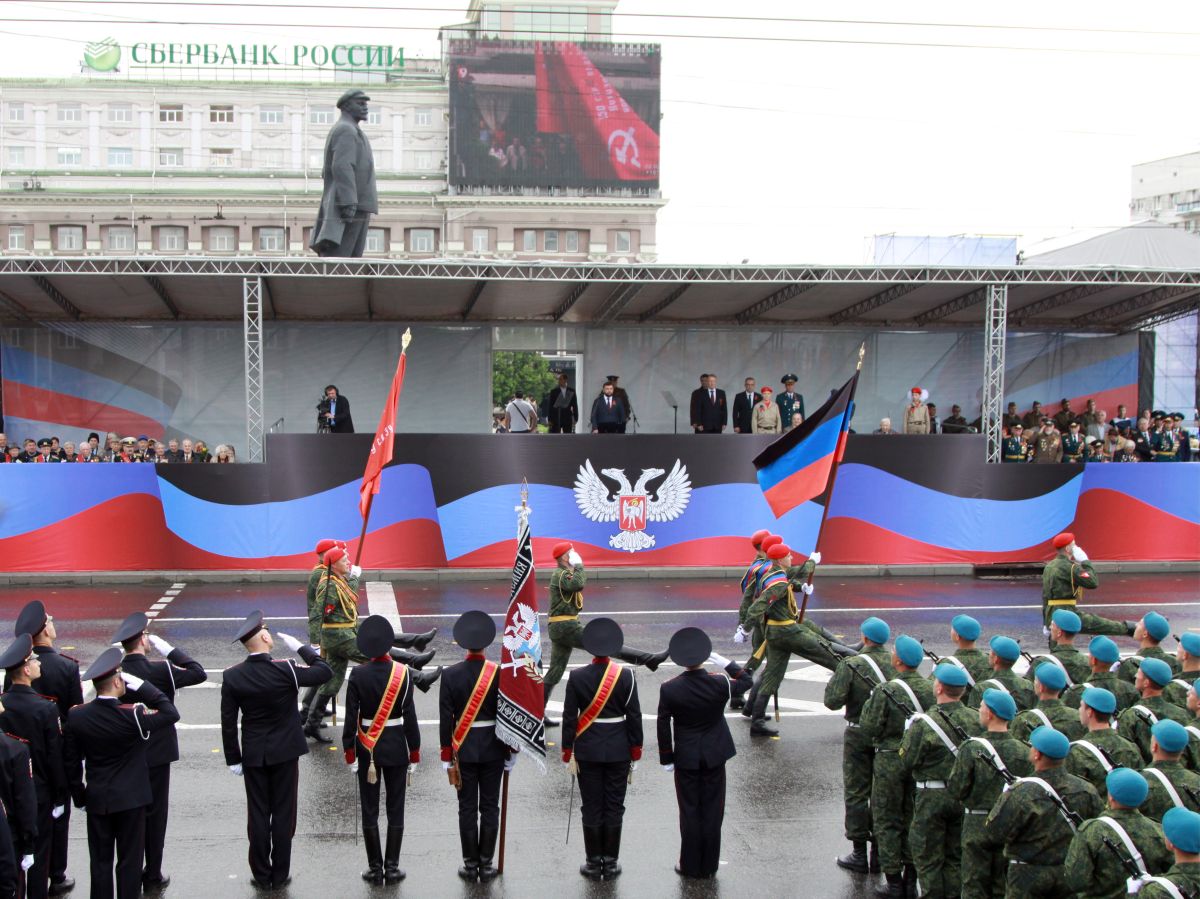Before the Invasion: The Russian-Belarusian Allied Resolve Exercises
On 10-20 February, Belarus hosted the active phase of the Belarusian-Russian manoeuvres Allied Resolve, after which Russian troops remained in the country. The drills preceded the Russian invasion of Ukraine that started on 24 February. The scenario was an extension of last year’s Zapad exercises and simulated actions against the countries of NATO’s Eastern Flank and Ukraine. The manoeuvres showed Russia’s ability to deploy units over long distances (more than 10,000 km) and the high interoperability of the Russian and Belarusian armed forces. The growing military integration of Belarus and Russia, along with the decision to leave Russian military units in Belarus, is a challenge for NATO in the context of defending its Eastern Flank and its policy towards Ukraine.
 Foto: Henadz Zhinkov / Xinhua News Agency / Forum
Foto: Henadz Zhinkov / Xinhua News Agency / Forum
Political and Military Context
Allied Resolve took place at a time of growing tensions between Russia and Ukraine and NATO countries, related to Russia’s concentration of significant military forces on the border with Ukraine and in the occupied Crimea (estimates even indicate as many as 200,000 troops). An additional factor was the demands of Russian diplomacy towards the U.S. and NATO, including a guarantee of non-enlargement of the Alliance and the withdrawal of its military infrastructure from the countries of the Eastern Flank. The end of the manoeuvres coincided with increasing tensions in the Donbas, caused by the actions of the separatist authorities of the so-called Donetsk and Luhansk People’s Republics (DNR/LNR), by the decision of the Duma to send President Vladimir Putin an appeal to recognise the independence of both territories, and by the Russian demands for the Ukrainians to implement the Minsk agreements. After the end of the manoeuvres, Russia recognised the separatist “people’s republics” in Donbas.
The preparatory phase and the drills themselves were accompanied by comprehensive exercises by the entire Russian navy and strategic forces, for which Alexander Lukashenka of Belarus was invited to observe on 19 February. A very important element was the dissemination of the actions taken by the armed forces of both countries, including their numbers and the movement of individual units and weapons, all of which was aimed at increasing tensions amongst the public in Ukraine and in NATO countries.
After the end of the active phase of the exercises, Lukashenka and Russian President Vladimir Putin decided to extend the joint military activities of both countries on the territory of Belarus, officially citing the still tense security situation in the region as the reason.
The Course of the Manoeuvres
The active phase of the exercises was preceded by a check of the combat readiness of the forces of the Union State (Belarus and Russia), which lasted from the beginning of January to 9 February. As part of it, troops were transferred and a new grouping created, the defence of important state facilities was organised, and border protection in the air was strengthened. Several episodes similar to the scenario of the active phase were role-played, such as blocking and destroying “illegal” armed groups, their artillery, and air support. As part of the preparations for the key stage of the manoeuvres, there were also many “patriotic and historical” events with the participation of Russian and Belarusian soldiers, which were to show the common heritage of both countries.
According to the scenario, the so-called “Western” countries of “Nyaris”, “Pomoria”, and “Klopiya” (fictitious, but resembling Poland, Lithuania, and Latvia) tried to force a political crisis and change the authorities in the “Republic of Polesia” (Belarus), which together with the “Northern Federation” (Russia) formed the “Union State”. When these “Western” states failed to achieve this goal, they provoked armed conflict between “Dnieprovya” (Ukraine) and neighbouring “Polesia”. In the next stage, the Western states introduced peacekeepers to “Dnieprovya” and made demands on the “Polesia” government to respect “democratic rights”, release political prisoners, and give up power. These postulates were rejected, after which “Nyaris”, “Pomoria” and “Klopiya” started their aggression against “Polesia”. The republic was provided aid by the “Northern Federation”, and the “Union State” forces managed to repel the attack and conduct a counter-attack.
The scenario was very similar to last year’s Zapad exercises. The most significant change was the introduction of “Dnieprovya” to the war theatre, which revealed that Russia and Belarus not only viewed Ukraine as a state wholly dependent on NATO but also would allow actions against it from Belarusian territory, although this contradicts their official political declarations to date.
During the exercises, special attention was paid to joint reconnaissance activities, anti-aircraft defence, manoeuvring defence, transfer of forces, and their regrouping against counter-strike. The activities were attended by, among others, Special Operations Forces, Airborne Forces, Marines, Mechanised Forces, Artillery, Air Defence, and the Air Force.
Contrary to the Zapad exercises, neither Belarus nor Russia disclosed the number of troops or equipment involved. The size of the Russian forces deployed to Belarus was estimated by NATO at 30,000 troops, while the Belarusian and Russian press reported that the vast majority of the Belarusian Armed Forces took part in the exercises, which gives an estimate of the number of all participants at a maximum of 60,000.
Political Importance. The manoeuvres scenario showed a change in Belarus’ approach to Ukraine. The policy of Belarus, which had previously tried to act as an intermediary between Russia and Ukraine, now completely sides with Russia. The Belarusian authorities see Ukraine as a puppet in the hands of Western countries that want to use it to provoke a conflict with Russia.
The exercises were a demonstration of the strength of the Russian-Belarusian alliance directed at NATO countries and Ukraine, and another signal of the progressive integration of both countries. The transfer of significant Russian forces from the Eastern Military District (MD) to Belarus and leaving them there shows, in turn, that Russia is not concerned about security in its eastern strategic direction. This is the result of the tactical alliance with China, which supports Russia in its anti-U.S. activities.
The manoeuvres were also a signal to Belarusian society, confirming Belarus’ increased dependence on Russia. The referendum scheduled for 27 February on changes to the Belarusian constitution, which was presented as the government’s response to the post-election protests in August 2020, will take place in conditions of a Russian military presence. For Lukashenka, this is to be an additional guarantee of the security of his regime and another way to intimidate Belarusian society.
Military Significance
Allied Resolve were the first drills of this scale conducted by both countries in winter. It was also the first exercise of this type entirely organised on the territory of Belarus. They proved the increasing interoperability of the Armed Forces of Russia and Belarus and that Russia can use Belarusian territory without restrictions as a logistic base (railways, airports, materiel bases). They also demonstrated the Russian ability to transport units over long distances and to concentrate significant potential in the western strategic direction faster than previously assumed.
As part of the exercises, the Russians transferred to Belarus Iskander short-range ballistic missile systems (NATO reporting name: SS-26 Stone), the S-400 mobile surface-to-air missile systems (SA-21 Growler), Pantsir-S medium-range surface-to-air missiles (SA-22 Greyhound), and Su-35 fighters (Flanker-E), among others.
Some of these weapons will remain in Belarus, for example, as part of the Belarusian-Russian training and combat center for the Air Force and Air Defense Forces, established in 2021. The exercises, combined with political activities, were also an element of signaling the increasing offensive capabilities of both countries towards NATO, especially its Eastern Flank, and Ukraine.
Conclusions
Allied Resolve, which preceded the Russian invasion of Ukraine, was an unprecedented exercise in both the political and military dimensions. The manoeuvres and the decision to leave Russian forces in Belarus on the pretext of countering the stationing of troops of Alliance countries on NATO’s Eastern Flank near the Belarusian border show that Belarus has ceased to pursue an independent policy towards its neighbours and its actions are entirely subordinated to Russia’s policy. The manoeuvres also proved that exerting military pressure has become an important element of foreign and security policy, not only in Russia, but also in Belarus.
Both countries will consistently implement the provisions of the Union State’s military doctrine published in February this year. The advancing military integration of Russia and Belarus creates new threats for NATO.
The drills showed clearly that the Russian forces could launch an attack on Ukraine from Belarus with the participation of the Belarusian army providing logistical support and protection in the vicinity of the border with the countries of NATO’s Eastern Flank. Russia’s increasing ability to transport important military components over long distances and the possibility of using Belarus as a logistic base will significantly reduce the time needed to prepare a potential attack on Alliance countries. Since the latest aggression against Ukraine has resulted in increased military threats to NATO, the Alliance’s response will include appropriate adaptation of operational plans, exercises, and the command structure and forces on the Eastern Flank.





